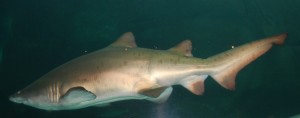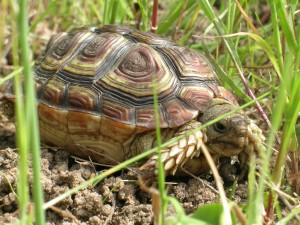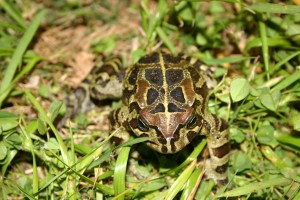CHAPTER < TWO - AN ENDURING AND SACRED ALLIANCE CONTD...
 Human beings did not evolve to live alone on this Earth, and yet unless we are part of a culture bound to animals in a sacred pact of survival such as a Bedouin caravan with its camel train trudging across burning desert sands, or a Tibetan tribe negotiating the treacherous foothills of the Himalayas with its herd of shaggy, obdurate yaks, we give little credence to our connection to the other travellers on this planet. In our Western, anthropocentric way we see the creatures of the land, ocean and air; creatures that the Bible refers to as “living souls”, as physical entities only, unable to interact with our superior intelligence.
Human beings did not evolve to live alone on this Earth, and yet unless we are part of a culture bound to animals in a sacred pact of survival such as a Bedouin caravan with its camel train trudging across burning desert sands, or a Tibetan tribe negotiating the treacherous foothills of the Himalayas with its herd of shaggy, obdurate yaks, we give little credence to our connection to the other travellers on this planet. In our Western, anthropocentric way we see the creatures of the land, ocean and air; creatures that the Bible refers to as “living souls”, as physical entities only, unable to interact with our superior intelligence.
Certainly, we give our fellow travellers little credit for any type of heightened consciousness, and yet if you have ever, as I have, watched a mother giraffe staying close to the body of her baby which was killed by a pride of lions for days after the baby giraffe’s death, you cannot help but wonder at the mother’s vigil. Animals as mighty as the African elephant and birds as small as the common weaver, which inhabits many South African gardens, seem to have an awareness of death.
I have seen elephants probing the bleached scull of a fallen comrade with their trunks in a seeming display of reverence and recognition. And I have watched a male weaver bird staying close to the body of its dead mate as the lifeless female lay, feet-curled and body-upturned, after flying into a windowpane. The male weaver waited next to the body of its dead mate for several hours before flying off and it was tempting to project the anthropomorphic quality of grief onto the little surviving bird.
Who can really know for sure where human and animal consciousness touch and blend? Is it possible that the threads of connection binding us together in a precious bond of earthly alliance are shorter, yet stronger than we can ever imagine?
Adrift on the Atlantic
The story of yachtsman, Steven Callahan, who was cast adrift on the Atlantic Ocean, is an incredible epic of human survival. However, what takes this story into another fascinating dimension, well beyond the realms of the normal, is that Steven believes it was his connection to a school of Dorado that enabled him to survive his ordeal – not only in the accepted sense that he ate the fish, which he did, but also in the strange and mystical sense that he believed that the fish offered themselves to him so that he could survive. A man trained to think logically and rationally through the earning of degrees in both psychology and philosophy, he has no other explanation for their unusual behaviour.
The story of Steven Callahan’s epic adventure began when he was sailing across the Atlantic Ocean in his yacht the “Napoleon Solo”. Out of the blue, literally, a whale hit his yacht, causing it to fill with water. Within a minute the yacht started to list badly. Through a fog of panic and fear, Steven luckily had the presence of mind to throw his inflatable raft overboard. Then grabbing a sleeping bag and a makeshift survival bag with a spear gun tucked into it, Steven jumped into the rubber raft that was to be his home for the next 76 days. These items, as well as two plastic water stills, saved his life.
Trapped in the raft which he dubbed his rubber ducky, and wearing only a T-shirt, Steven drifted across the Atlantic Ocean at the mercy of the elements. As he floated on the surface of the sea, suffering agonies of heat, cold and thirst, a school of Dorado followed him. At first the exquisitely coloured Dorado tormented him, sharply butting at his heels and elbows as they protruded into the floor of the dinghy.
 Sharks also streaked past under the little round raft, brushing their abrasive skins against the thin rubber sheeting. Their sleek grey shapes terrified him. However it was the constant harassment of the Dorado that started to weigh heaviest on his spirit.
Sharks also streaked past under the little round raft, brushing their abrasive skins against the thin rubber sheeting. Their sleek grey shapes terrified him. However it was the constant harassment of the Dorado that started to weigh heaviest on his spirit.
Over the interminably long days of his confinement in the rubber ducky, Steven began to weaken from the combined effects of the battering of the waves and his intense hunger and thirst. As his body weight dropped by a third, his hold on life dwindled and it was in this dire physical and psychological state that Steven’s relationship with the Dorado began to change. Instead of swimming out of reach of his spear gun as they had done before, the fish began swimming closer in to the dinghy.
Unable in his weakened condition to lean over the side of the dinghy for hours in the hope of spearing a Dorado, the fish seemed to sense his weakness and they seemed to begin making it easier for Steven to catch them. Until in the end it seemed as if they offered themselves to him, lying on their sides right under the point of the spear gun, which by this time had broken down until it was just a butter knife tied to a rod, which was tied to the stock.
No part of the speared Dorado went to waste. Steven ate every part of the fish he caught, even their eyes and the partially digested contents of their stomachs. On the 51st day of his ordeal, he almost died and he knew that he needed a miracle in order to survive. He believes that the school of Dorado that followed him for more than 1800 nautical miles across the Atlantic Ocean provided him with that miracle. As the fish came in closer to the little rubber raft, he began to recognise them individually and to count on their presence. Their flesh sustained his body and their constant attendance sustained his spirit, protecting it from the terrible loneliness of his predicament.
Steven Callahan was eventually rescued by fishermen and taken ashore on the island of Marie Gallante, a small Caribbean island near Guadeloupe. The remaining Dorado stayed with him right up to the moment he was helped into his rescuers’ boat.
Father Lion
Another mystical and inexplicable example of the deep connection between man and beast involves the esteemed conservationist George Adamson. Known affectionately far and wide as Bwana Simba or Father Lion, George Adamson was a man ahead of his time in his beliefs in the importance of conservation. He was also a man who had spent much of his life living this ethos, eventually dying as he had lived, protecting those unable to protect themselves. After a full and active life, in his 83rd year George Adamson was murdered by bandits in Kora National Reserve, a remote game park in Kenya that he had spent much of his life building.
On the fateful day of his murder, a visiting German woman and one of George’s helpers had been on their way to pick up other visitors from Kora’s airstrip, not far from George’s camp, when a bandit group had accosted the woman and her companion, shooting at them. At the time that this incident was taking place George was typing a letter when his cook and close companion of many years, Hamisi, came running to tell him that he had heard gun shots nearby. Grabbing the rifle that was never far from his side, George and two other helpers jumped into his Land Rover and sped off to investigate the cause of the shots. As the rescue party came upon the German woman’s vehicle lying abandoned at the side of the road, its tires punctured, three bandits opened fire on them.
The automatic weapon fire killed George Adamson instantly, and so it seemed that the legend of the white-haired Father of the Lions was to die alongside his bullet-ridden body on that dusty forsaken African road. This, however, was not to be, as there was still a final chapter to be written into the story of this remarkable man’s life and death. On the night that George Adamson was killed, a strange and inexplicable incident occurred at Kampi ya Simba, George’s bushveld camp. A large pride of lions entered the camp, remaining within its confines for a long period of time. They had also visited the camp the night before George was killed, seeming with hindsight, to display a form of premonition and wishing to show their allegiance to George Adamson with their presence.
A simple and holy man
Travelling further back in time to the Middle Ages, to the date of 4th October 1226 to be exact, a similarly mystical occurrence took place in the steep medieval city of Assisi. On that particular day as the golden ball of the Sun was sliding from the early evening sky, in a humble dwelling befitting a man who had embraced Lady Poverty as the cornerstone of his existence, Saint Francis of Assisi lay dying. After blessing the brothers of his Franciscan Order who were in attendance around his sickbed, with his last flicker of strength Saint Francis whispered a song. It was the 142nd psalm and it took him quietly from agonised life into welcoming death.
With twilight darkening the autumn sky, at the point of his passing from this world to the next, a great flock of birds appeared above the roof of the little house in which Father Francis’ body lay. They flew round and round, flying “joyfully for a long time together, giving clear and joyous testimony to the glory of the saint who had been wont to invite them to sing the praises of God”.
During his lifetime Brother Francis had lovingly embraced every aspect of the natural world. A man of great humility, he had shunned the luxury of splendid papal palaces and rich merchants’ villas, which as head of a religious Order, some believed he should reside in; preferring instead to be out and about in nature with the hard earth for a bed, a rock for a pillow and the wide, open sky as a roof over his head.
 As he travelled along rough missionary roads on bruised and bloodied feet, bringing his gifts of faith, compassion and healing to the sick and poor of the thirteenth century world in which he ministered, Brother Francis made friends with the creatures of the fields and skies that crossed his path. So it was entirely befitting that in this spirit of friendship between a simple and holy man and the creatures of God’s Kingdom, it was the joyous birdsong of a great multitude of birds that trumpeted the passing of this most beloved of saints from an earthly existence into a heavenly eternity.
As he travelled along rough missionary roads on bruised and bloodied feet, bringing his gifts of faith, compassion and healing to the sick and poor of the thirteenth century world in which he ministered, Brother Francis made friends with the creatures of the fields and skies that crossed his path. So it was entirely befitting that in this spirit of friendship between a simple and holy man and the creatures of God’s Kingdom, it was the joyous birdsong of a great multitude of birds that trumpeted the passing of this most beloved of saints from an earthly existence into a heavenly eternity.
Childhood lessons
There are countless such real-life examples, documented and undocumented, of animal prescience and the connection between the consciousness of human beings and the consciousness of animals, fish and birds. Down through the centuries, stories and legends have illustrated the close bond between men and women, girls and boys and the creatures of the land, sea and sky. From the legends of the female wolf that suckled Romulus and Remus to Tarzan and his Apemen, such stories have reinforced this connection. Indeed they have become a treasured part of our universal folklore, teaching valuable lessons for living in a sometimes-frightening world.
Generations of children have learnt to distinguish evil intent through Little Red Riding Hood’s encounter with the Big Bad Wolf. Identity lost and found has been personified by the sad little Ugly Duckling who eventually grows into a magnificent swan. And the value of industriousness has been emphasised by the tale of the Three Little Pigs who learnt that only the hard work of building a brick house could stop the pesky wolf from blowing their house down.
 To page through a picture book of children’s stories is to recognise freedom in the form of Cinderella’s mice horses and happiness in the form of the beautiful Blue Bird. These stories have nourished the minds of children everywhere and they are filled with silvery fish, big brown bears, round green toads, fleet-footed steeds, and fluffy white rabbits. Our world would be a lonely place indeed without these and other living creatures, for on our lonely planet in our enormous galaxy they are a source not only of wonder, but also of a helpful and healing companionship that is vital to the health of our human psyche.
To page through a picture book of children’s stories is to recognise freedom in the form of Cinderella’s mice horses and happiness in the form of the beautiful Blue Bird. These stories have nourished the minds of children everywhere and they are filled with silvery fish, big brown bears, round green toads, fleet-footed steeds, and fluffy white rabbits. Our world would be a lonely place indeed without these and other living creatures, for on our lonely planet in our enormous galaxy they are a source not only of wonder, but also of a helpful and healing companionship that is vital to the health of our human psyche.
Our links with the landmasses, sea and sky, as well as the other inhabitants of our planet, are sacred associations that have formed and sustained our species since the beginning of our time. They have shaped what we look like, how we move, how we feel and how we think. Our most primitive instincts for survival and our loftiest intellectual and spiritual pursuits have developed out of our long relationship with the natural world around us. We are truly the children of Mother Earth and yet at the beginning of this 21st Century it is all too easy to forget this fundamental fact.
If our species is not to commit matricide in the time ahead then we urgently need to rethink our roots. We need to take a long hard look at where we have come from and where we are going to in this new millennium. The way forward is not guaranteed, for it seems we have reached a universal crossroads and this juncture is the place at which we need to stop and rest and reconsider.
We urgently need to reconsider our contract with Mother Earth, undeniably our most important and enduring contract, and one, which of late, we have not been honouring. We need to examine the impact of our activities upon the integrity of the Earth’s natural systems and the other life forms with which we share this planet and we especially need to analyse the thinking and belief patterns as well as the value systems that have formed the underlying basis for these activities. For it is only through understanding what we have done wrong, that we can then do what needs to be done, to put those wrongs to right…
This is such a great site keep up the hard work. if your looking for free trafic to your site check us out post items with link back to your site Free Classifieds:Real estate, apartments, condo, house rental, room rental, roommates, short term rentals, commercial, office space, storage, parking, houses for sale, condos for sale, land for sale, Cars, Trucks, Vans, Rvs, Parts, Jobs Pets, Livestock, Farm, news all at http://topdollarclassifieds.ca/